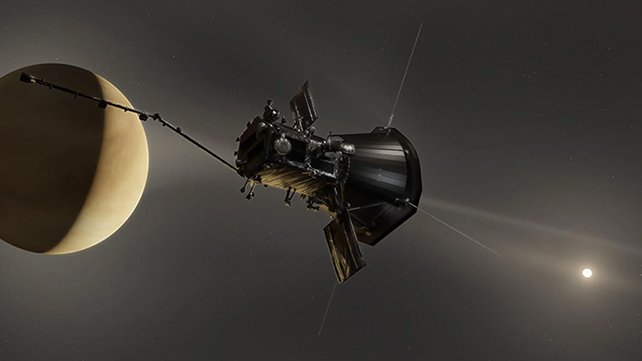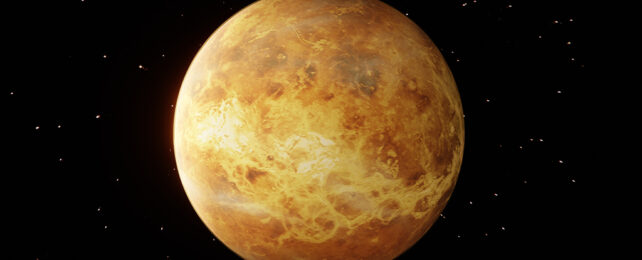With crushing atmospheric pressures and runaway temperatures, surviving on the surface of Venus is impossible. But if you could stand on the planet for a few minutes, would you see any lightning? A new study concludes: probably not.
The research, carried out by a team from the University of Colorado Boulder, West Virginia University, the University of California, Los Angeles, and the University of California, Berkeley, reanalyzed signals emanating from the second-closest planet to the Sun.
In 1978, when NASA's Pioneer Venus went into orbit around Venus, it detected what are known as whistler waves. On Earth these electromagnetic ripples are typically created by lightning, leading researchers to assume the waves were signs of electrical activity on Venus as well.
The new study suggests the Venusian versions might not be what they first seemed.
"There's been debate about lightning on Venus for close to 40 years," says magnetospheric physicist and lead author Harriet George from the University of Colorado Boulder. "Hopefully, with our newly available data, we can help to reconcile that debate."
Whistler waves are very low frequency (VLF) electromagnetic waves, so called because of the way they 'whistle' when heard by radio operators. They're created by colliding electrons in the atmosphere – typically set into motion by lightning strikes.
This latest study used data collected in 2021 by another NASA spacecraft, the Parker Solar Probe, on its way towards the Sun. Once again, whistler waves were detected, but something was off: the waves were heading in the wrong direction.
Rather than being blown out into space, as happens with lightning storms, these whistler waves were heading downwards towards the planet's surface. That suggests lightning isn't the primary cause of these electrical signals.
"They were heading backward from what everybody had been imagining for the last 40 years," says space plasma physicist David Malaspina from the University of Colorado Boulder.

That's not to say that there's no lightning on Venus, but there's unlikely to be much of it – and the abundant whistler waves that are being picked up by passing spacecraft would appear to be created by other phenomena.
What those other processes might be isn't tackled in depth in this study, but the researchers suspect magnetic reconnection might play a role, where the magnetic field lines around Venus twist, snap, and then join together again.
Previous studies have argued both for and against the existence of Venusian lightning, and the case isn't closed yet. More detailed data is required to know for sure, and the Parker Solar Probe still has another pass to make, which gives researchers another opportunity to take a closer look at the weather on Venus.
"It's very rare that new scientific instruments make it to Venus," says Malaspina. "We don't get a lot of chances to do this kind of interesting research."
The research has been published in Geophysical Research Letters.
